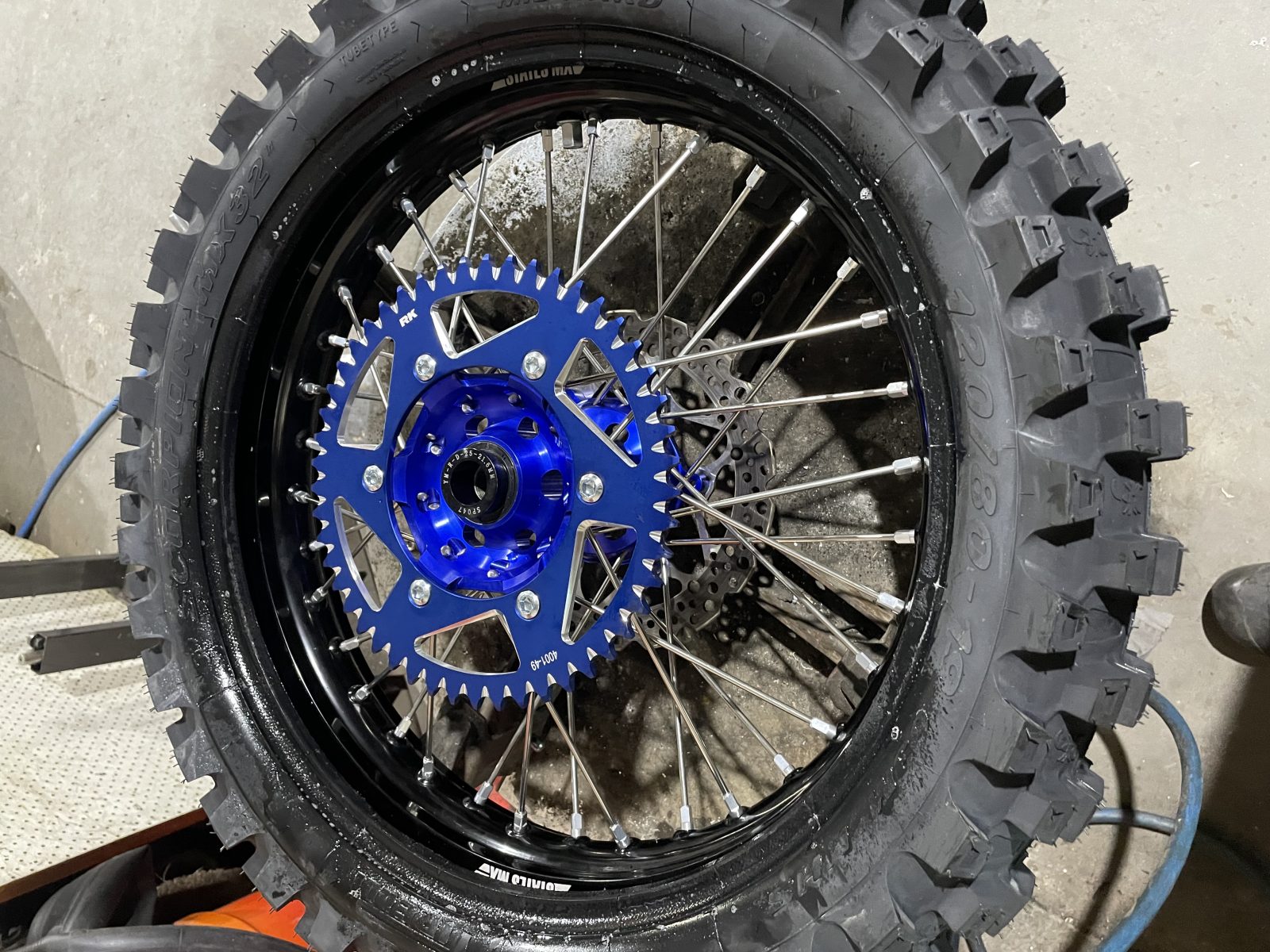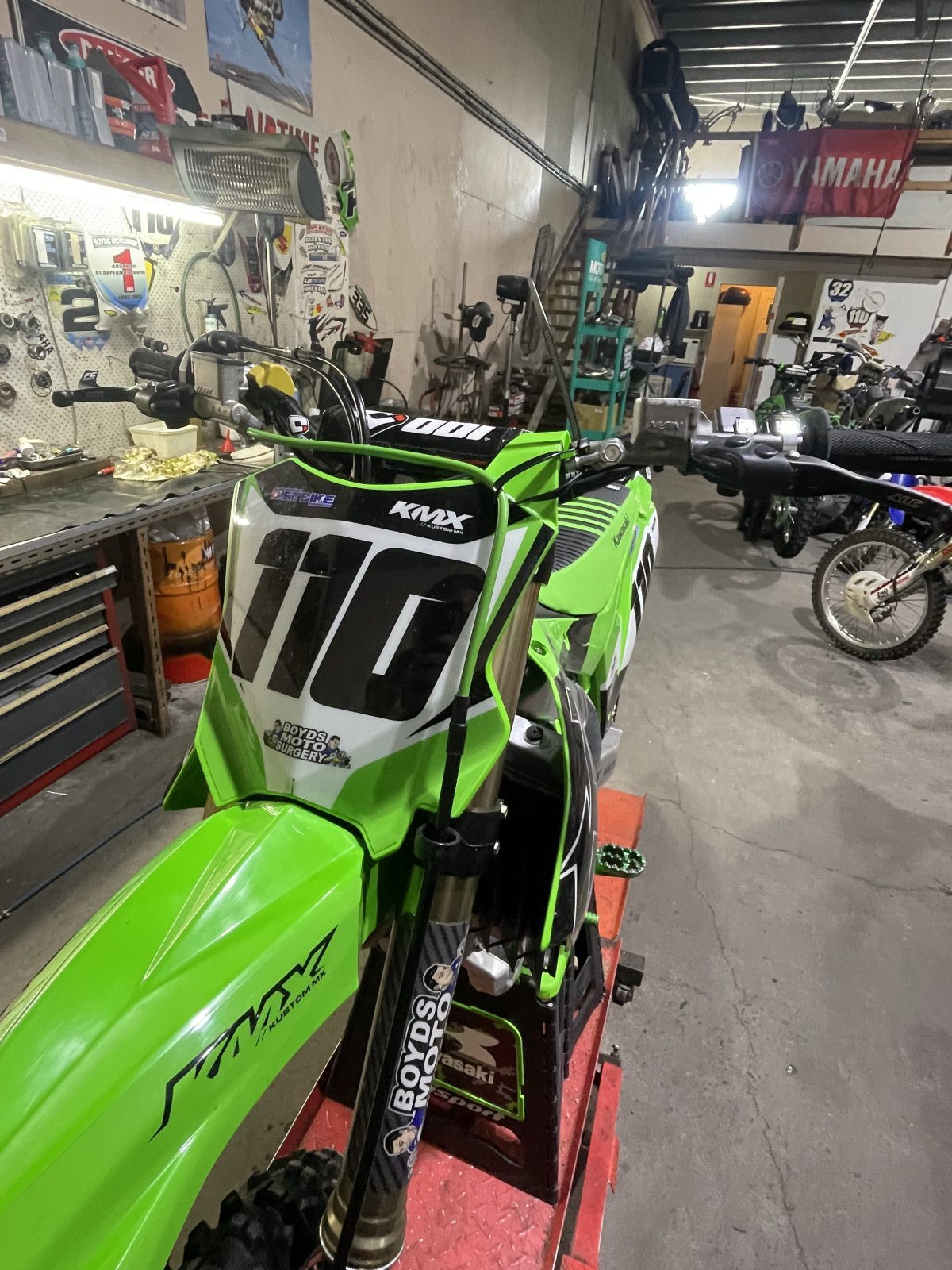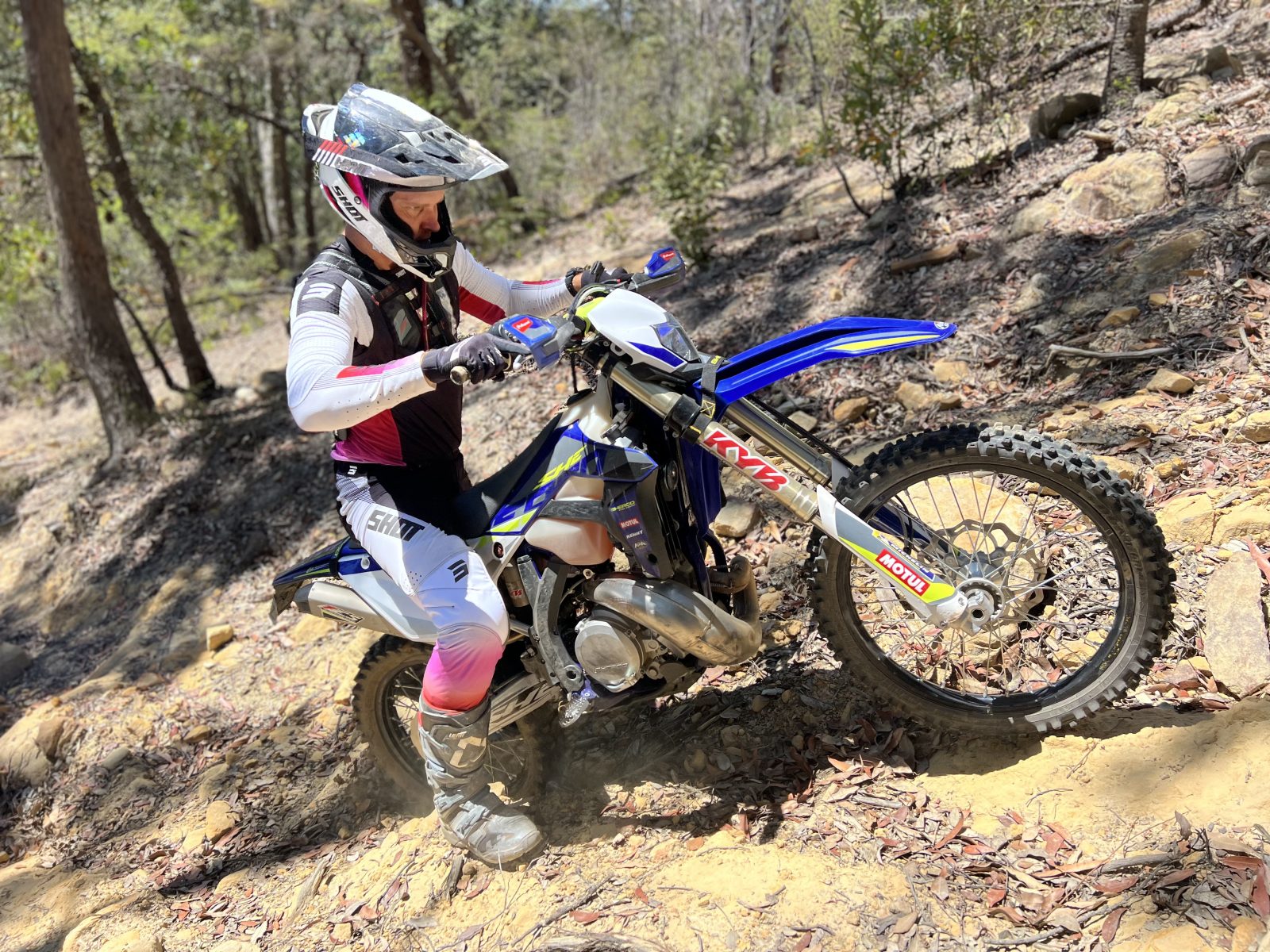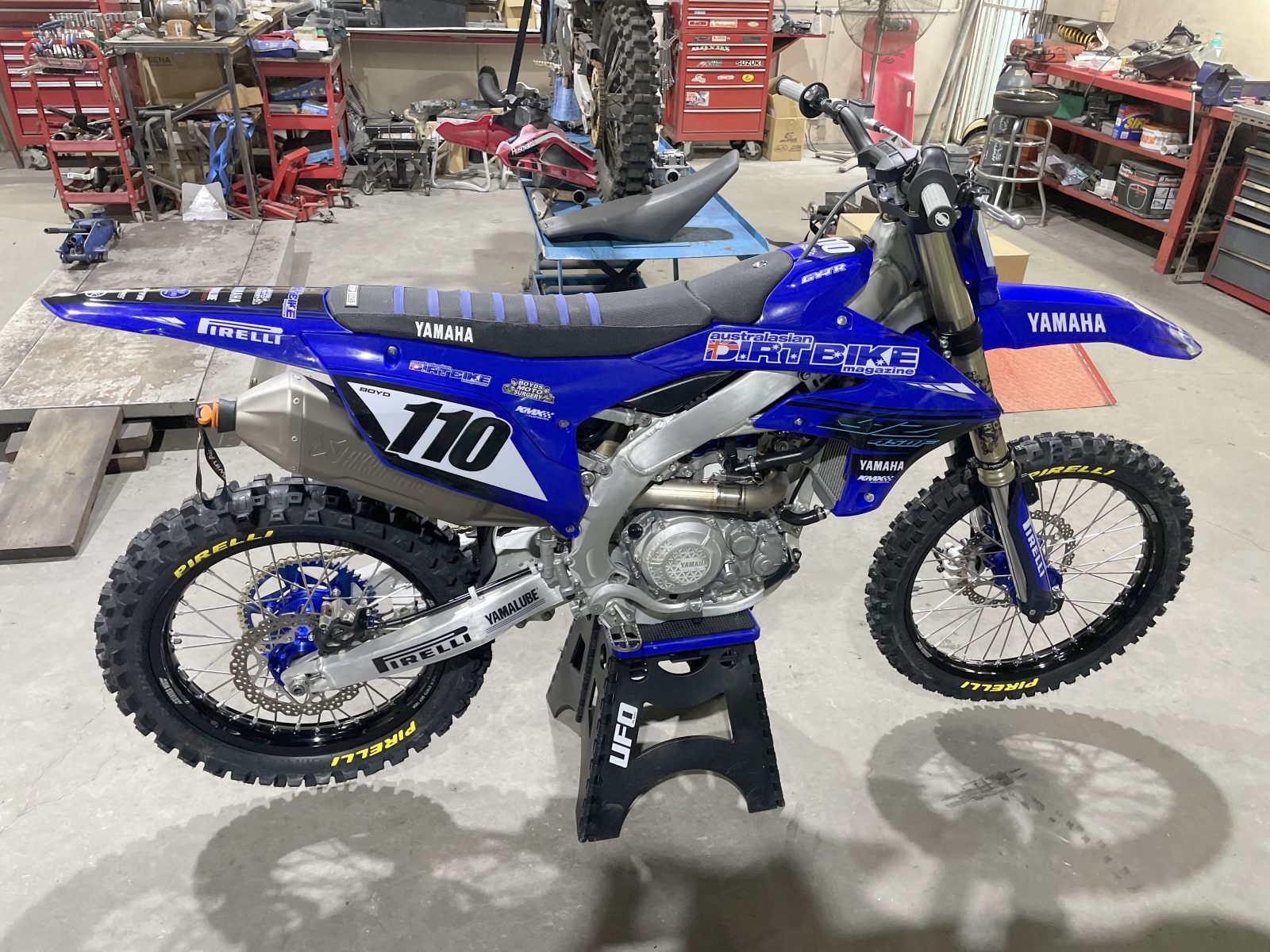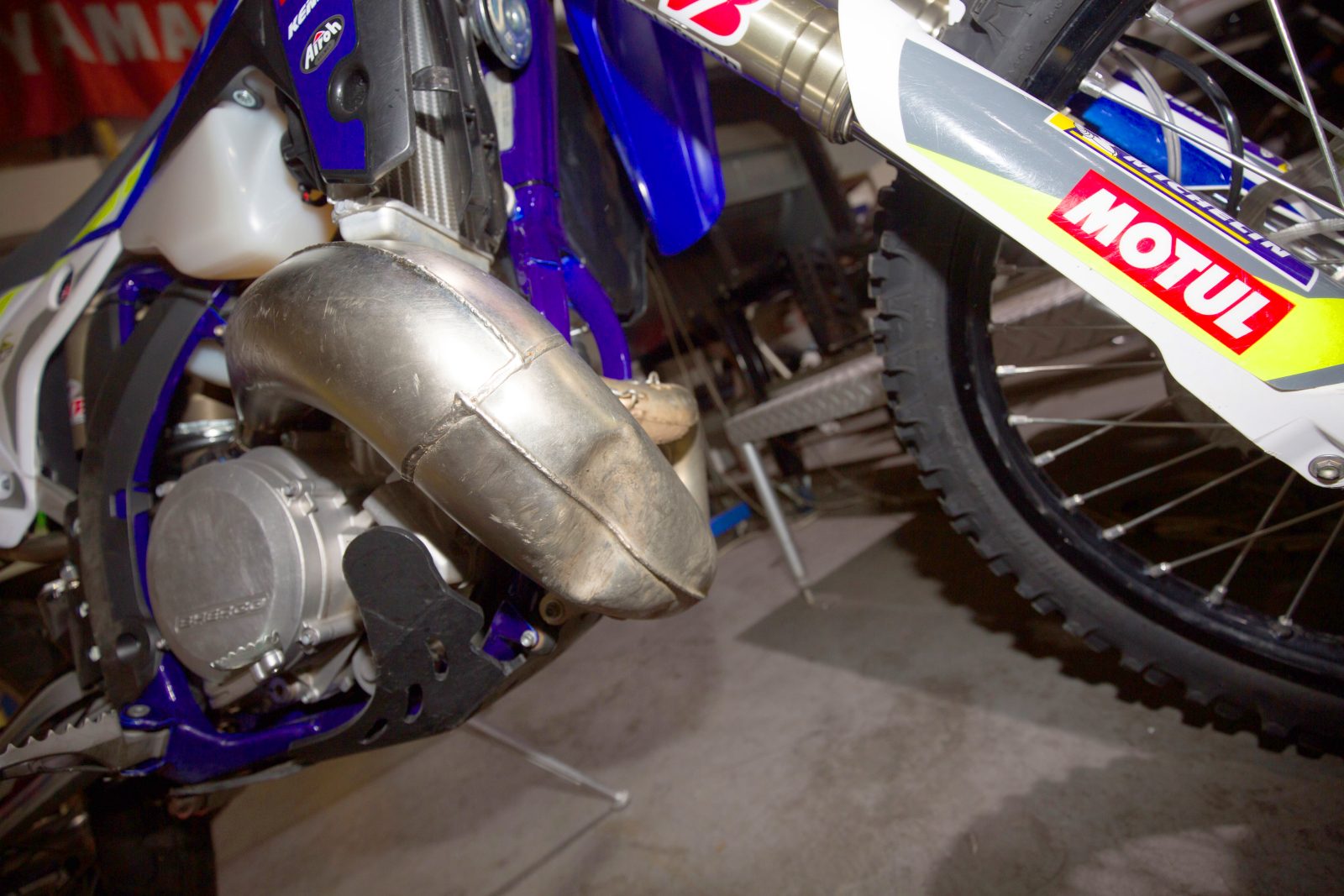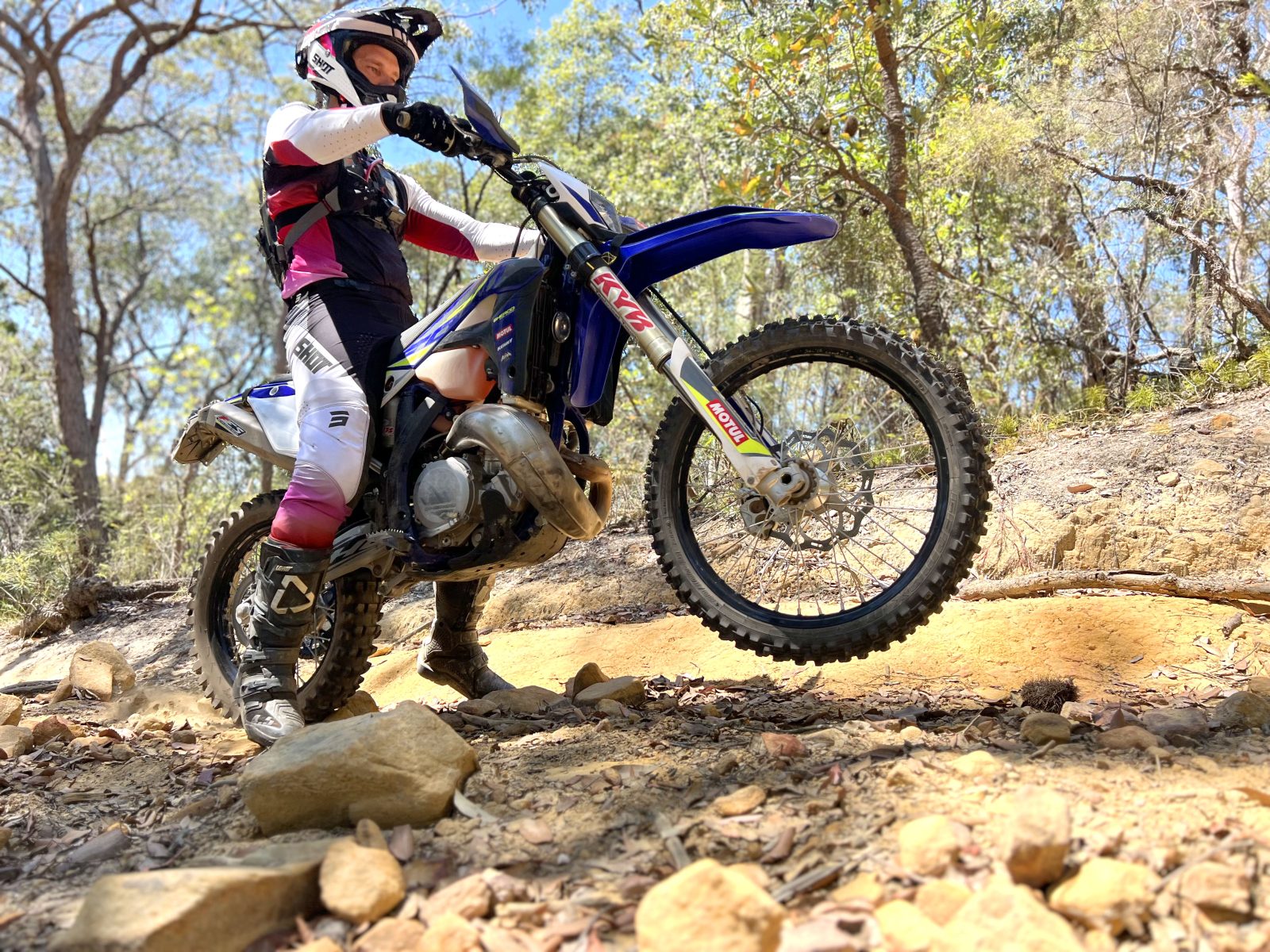One of the biggest challenges a desert rider will face is sand whoops and, after many years racing at Finke, I know whoops can go on for miles and wear out even the most experienced rider. They’re enough to turn a dream into your worst nightmare.
When practicing techniques, you have to ease in. We start with mild whoops on hard sand that give riders a chance to focus on the individual points that go together. There’s a lot to consider with simple straight line technique.
You have to be mindful of throttle, body position, footpeg steering (where you adjust your weight from one footpeg to the other), surface awareness, looking ahead, line selection and gear selection.
So if you don’t like hospital food or sitting in the casualty ward all day just to have a doctor state the bleeding obvious then follow these techniques and you chances of surviving your future adventure rides will be greatly increased:
Large, Soft Sand Whoops
This is an advanced technique for crossing sand whoops on an adventure bike. The images show how I crisscross a whooped-out track using not only my body to absorb the crest of the whoops but I’m also turning on the edge of the top of each whoop that usually provides a small, natural berm to help steer off.

It is easier for you to keep the wheels of the heavy adventure bikes on the ground while trying to cover the ground as quickly as possible.
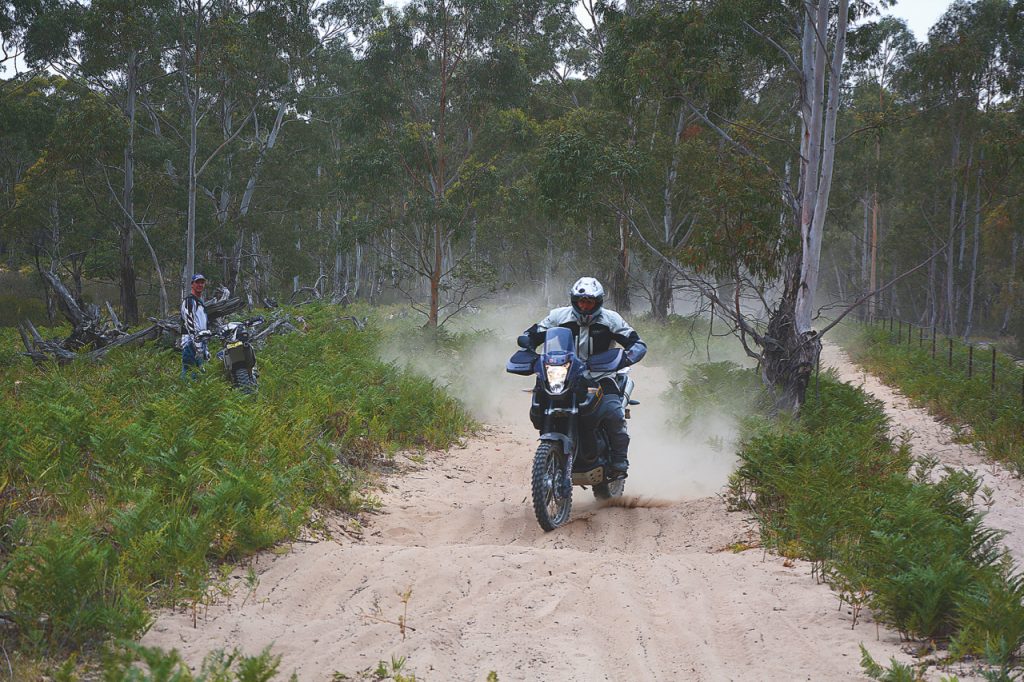
The other advantage is that you lengthen the time of travel between each crest, which also helps stop the gravity forces compressing the suspension as you scrub the top of each bump.
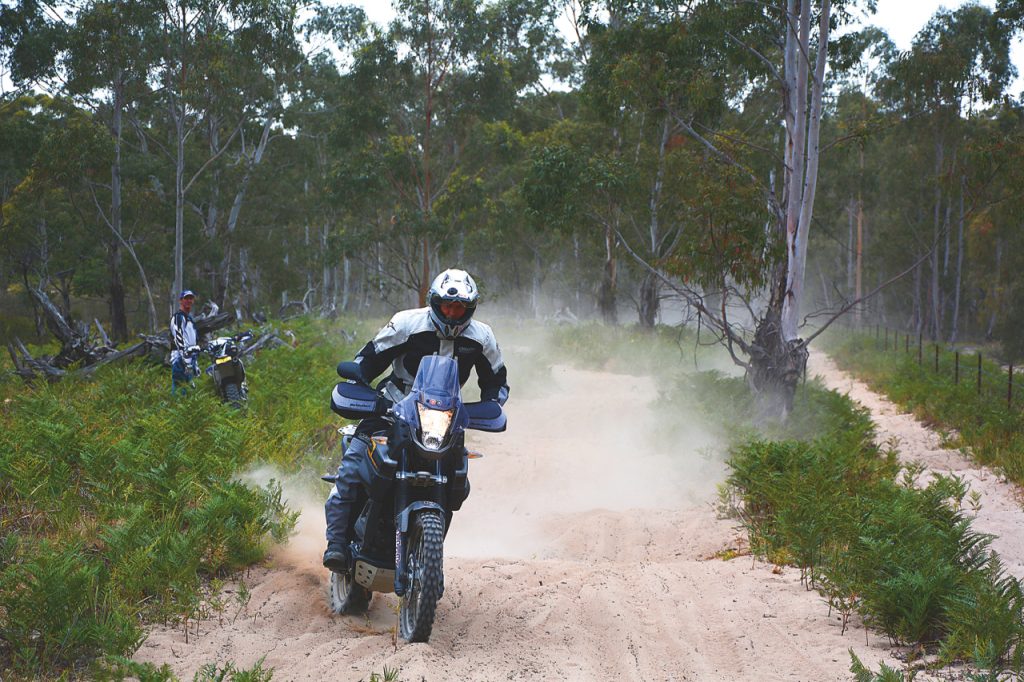
Smaller, Firmer Whoops
Starting in the standing position with the ‘balls’ of my feet evenly balanced on the footpegs, I have enough speed to allow the bike to follow the ground’s contours so the suspension will compress to help gain height with the rebound.
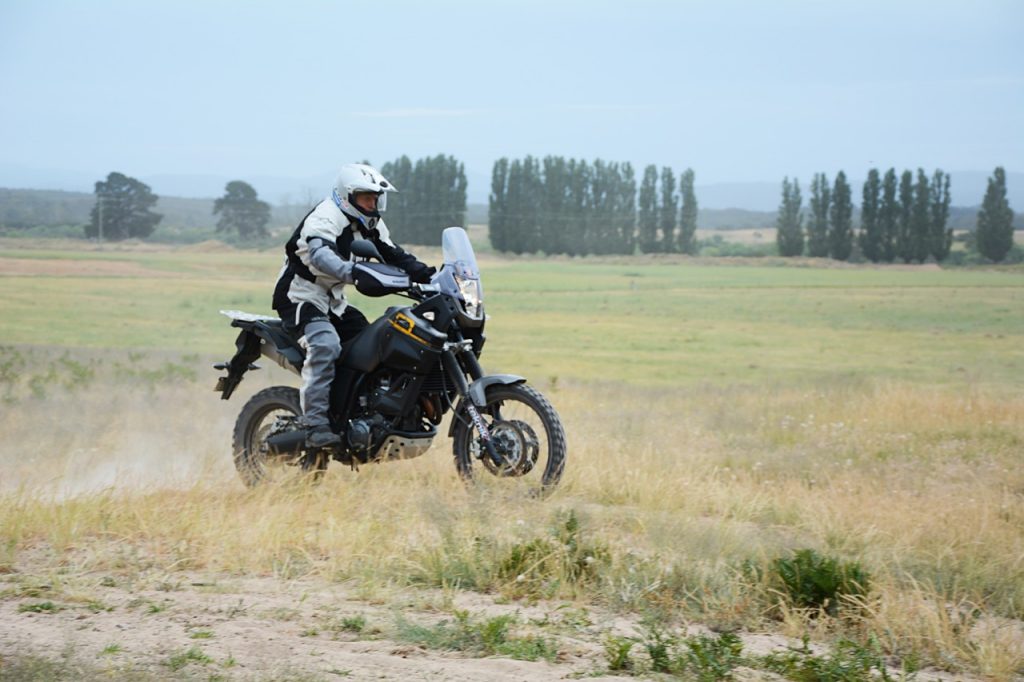
On the next sand whoop the speed and suspension compression was enough to lift the bike. With the correct timing and momentum the bike should land on top of the next whoop.
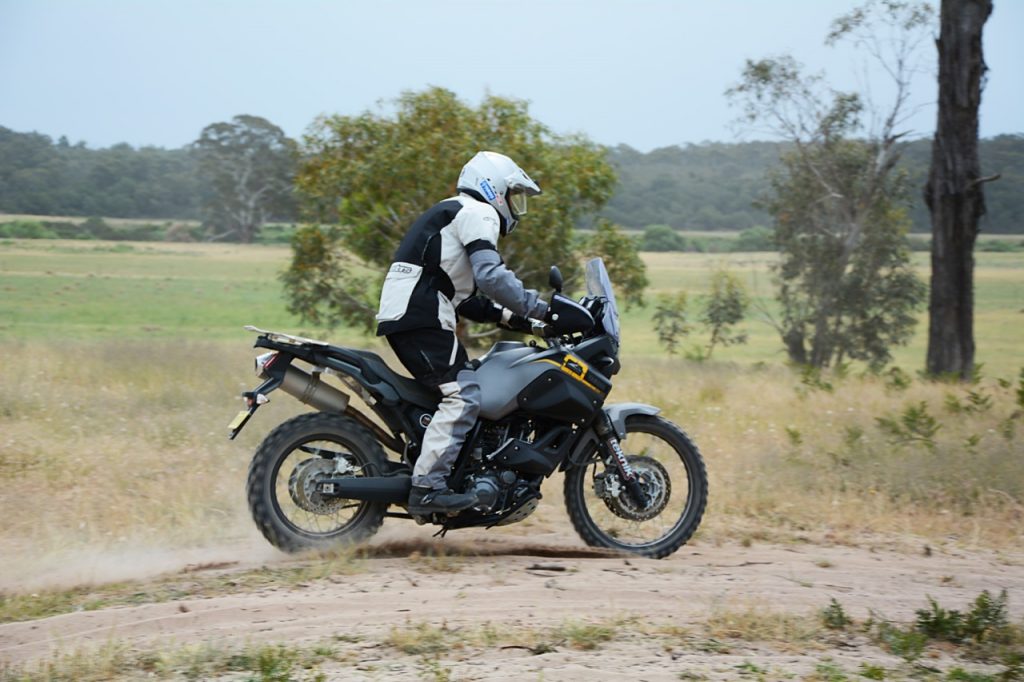
Looking four to five bike lengths ahead, you have to judge the depth of upcoming whoops with this technique. Larger adventure bikes lack instant throttle response so this technique requires aggressive throttle control from the bottom to the top of each whoop to add air-time and distance.
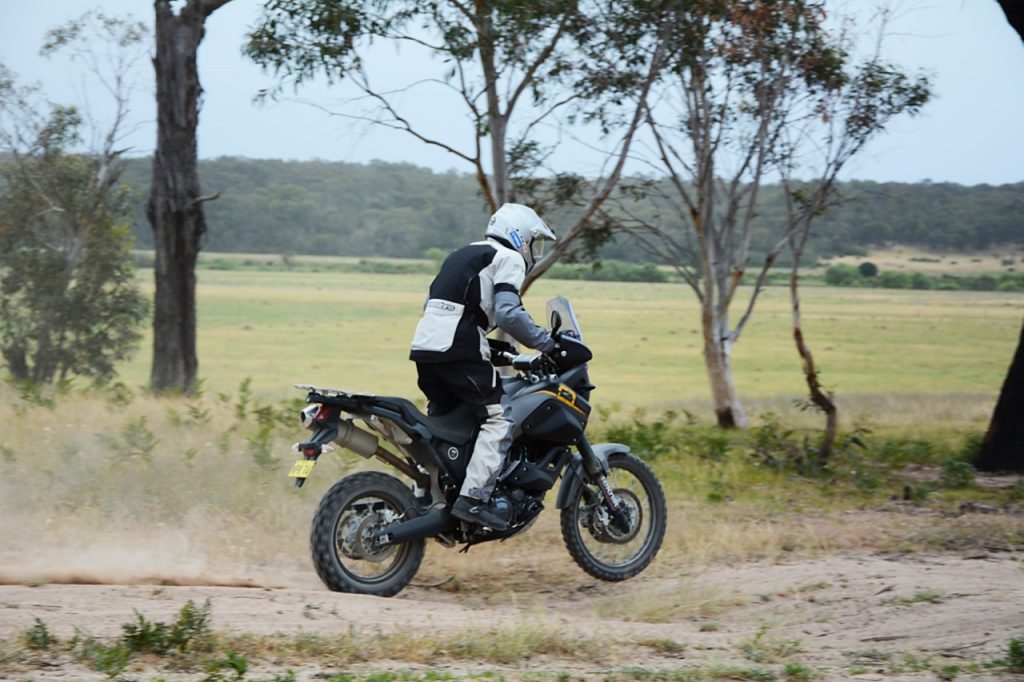
Typically, no two sand whoops are the same so you constantly need to be reading the conditions as you approach each whoop, hitting the up-ramp at the angle necessary to give the bike the correct amount of lift.
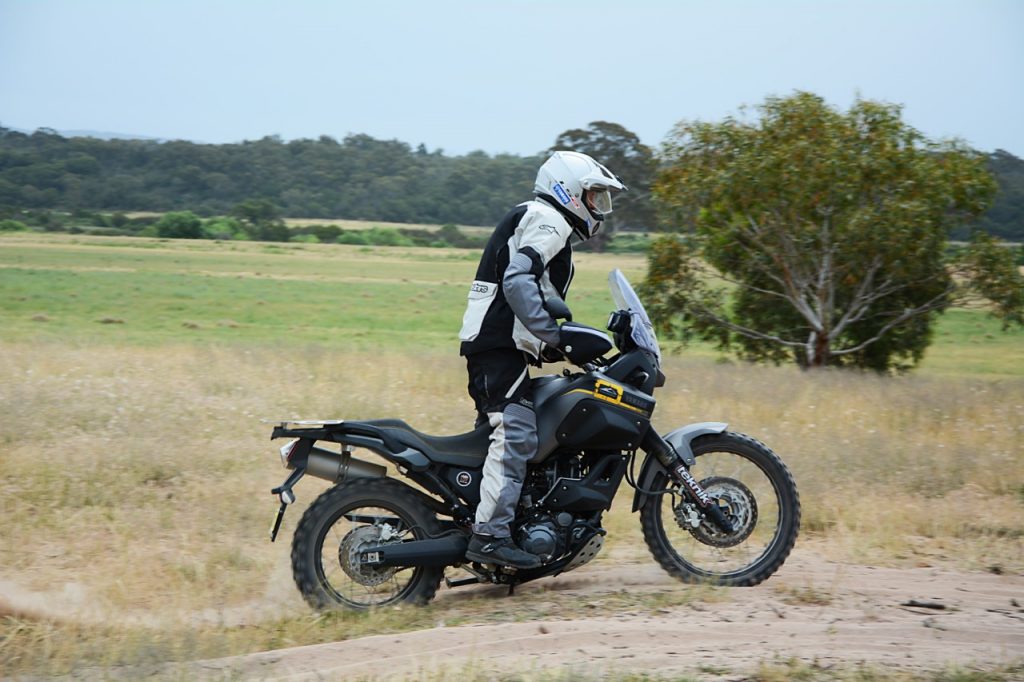
Stephen Gall




